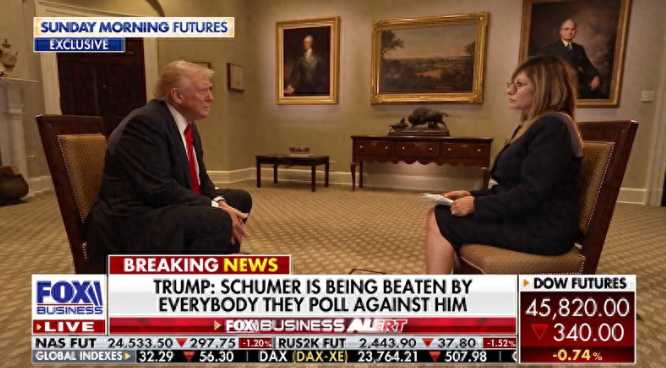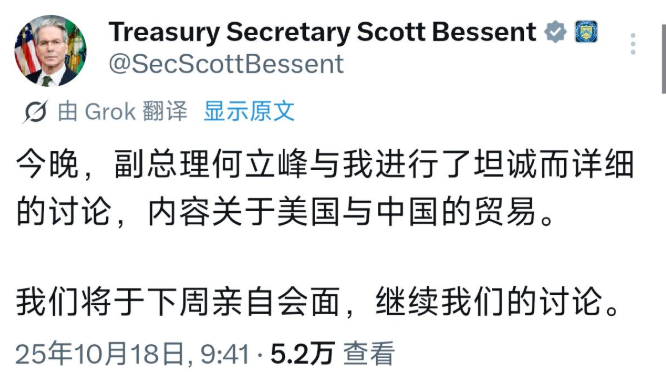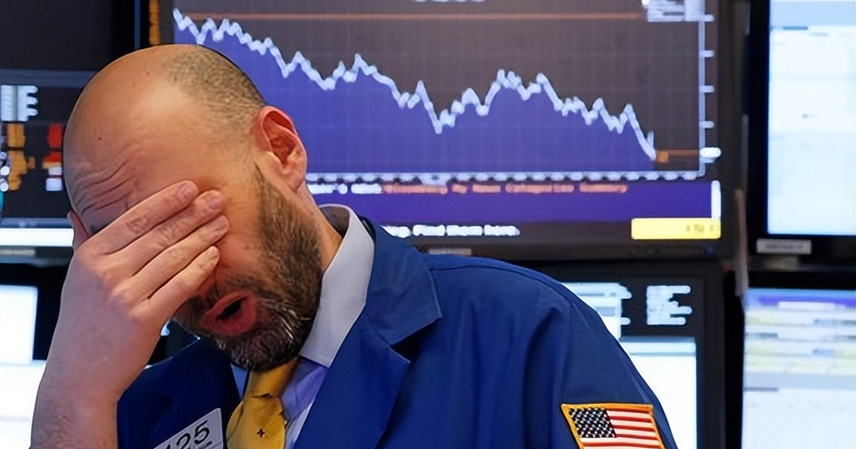Trump Admits High Tariffs Are Unsustainable
In a pre-recorded interview aired on October 17, 2025, former President Donald Trump acknowledged that his proposal for 100% tariffs on Chinese goods is unsustainable. When asked about the potential economic impact, Trump stated, “It’s unsustainable, but those are the numbers.”
He blamed the stalemate in U.S.–China trade negotiations on recent Chinese regulations on rare earth exports, portraying himself as compelled to act: “China forced me to announce the tariffs.”
However, Chinese authorities have repeatedly clarified that the new rare earth rules comply with domestic laws and international obligations, emphasizing that their measures are responsible and lawful, not retaliatory in nature.

The U.S.–China Trade Friction Context
China has also pointed out that its countermeasures, including those responding to the Section 301 investigations and sanctions on Chinese entities, were triggered by over 20 U.S. sanctions implemented within 20 days.
On October 17, 2025, the Chinese Ministry of Commerce released the Report on the United States’ Compliance with WTO Rules (2025), detailing violations and disruptions the U.S. has committed under the WTO framework since 2017. This underscores that many trade tensions were initiated by the U.S. rather than China.
Despite this, the Trump administration has been perceived as ignoring its missteps, making it challenging for negotiations to progress smoothly.
Trump Emphasizes “Fairness” Amid Criticism
When asked about the future of U.S.–China relations, Trump stressed the need for a “fair agreement”. Yet critics argue that the U.S. actions — such as misusing national security claims, imposing sanctions on Chinese industries, and enacting 20% tariffs under the pretext of fentanyl concerns — hardly meet the standard of fairness.
China, known for its strict anti-drug policies, regards the fentanyl argument as offensive, highlighting the asymmetry in how the U.S. frames trade and legal justifications.
Market Pressure Drives U.S. Policy Adjustment
Trump’s softened stance comes amid intense market pressures. Following the tariff announcement, Wall Street experienced significant turbulence, with major indices falling sharply in what was dubbed a “Black Friday”. Analysts note that any indication of compromise from Trump temporarily eases market volatility, illustrating why his tone shifted within a week.
Online commentators have even coined the term “TACO” — Trump Always Cowers On — to mock his tendency to retreat under pressure.
This pattern is not limited to Trump; senior officials like Treasury Secretary Janet Yellen and U.S. Trade Representative Katherine Tai (Greer) also demonstrate pragmatic adjustments in the face of economic realities.

Senior U.S. Officials Engage China
On October 18, 2025, Treasury Secretary Janet Yellen confirmed a frank and detailed discussion with Chinese counterparts regarding bilateral trade. She plans to personally meet with Chinese officials next week, potentially in Malaysia, ahead of Trump’s visit to South Korea for the APEC Leaders’ Informal Meeting.
The Chinese Ministry of Commerce reported that Vice Premier He Lifeng and U.S. officials Yellen and Tai held a constructive video call, covering key trade issues and agreeing to schedule the next round of U.S.–China economic consultations promptly.
This illustrates a clear dynamic: the U.S. is lowering its posture to resume talks, while China remains open to dialogue, maintaining its stance: “Ready to fight if necessary, but the door for talks remains open.”
Conclusion: Strategic Calculations in U.S.–China Trade
The recent developments highlight a strategic recalibration by the U.S., driven by market pressures and economic pragmatism, in response to China’s legal and measured trade policies.
China’s position demonstrates a dual strategy: defend its national interests while remaining open to constructive negotiations, signaling that trade disputes are addressed through rules and dialogue, not unilateral pressure.
As both sides navigate these tensions, the next round of economic consultations will reveal how far the U.S. is willing to compromise and how China leverages its regulatory and strategic cards to achieve a balanced outcome.
References
- Observers Network (Guanchazhe) Interview Reports, October 16–17, 2025
- Chinese Ministry of Commerce, 2025 U.S. Compliance with WTO Rules Report
- Fox News Interview with Donald Trump, October 16, 2025
- Bloomberg Coverage, October 17–18, 2025



